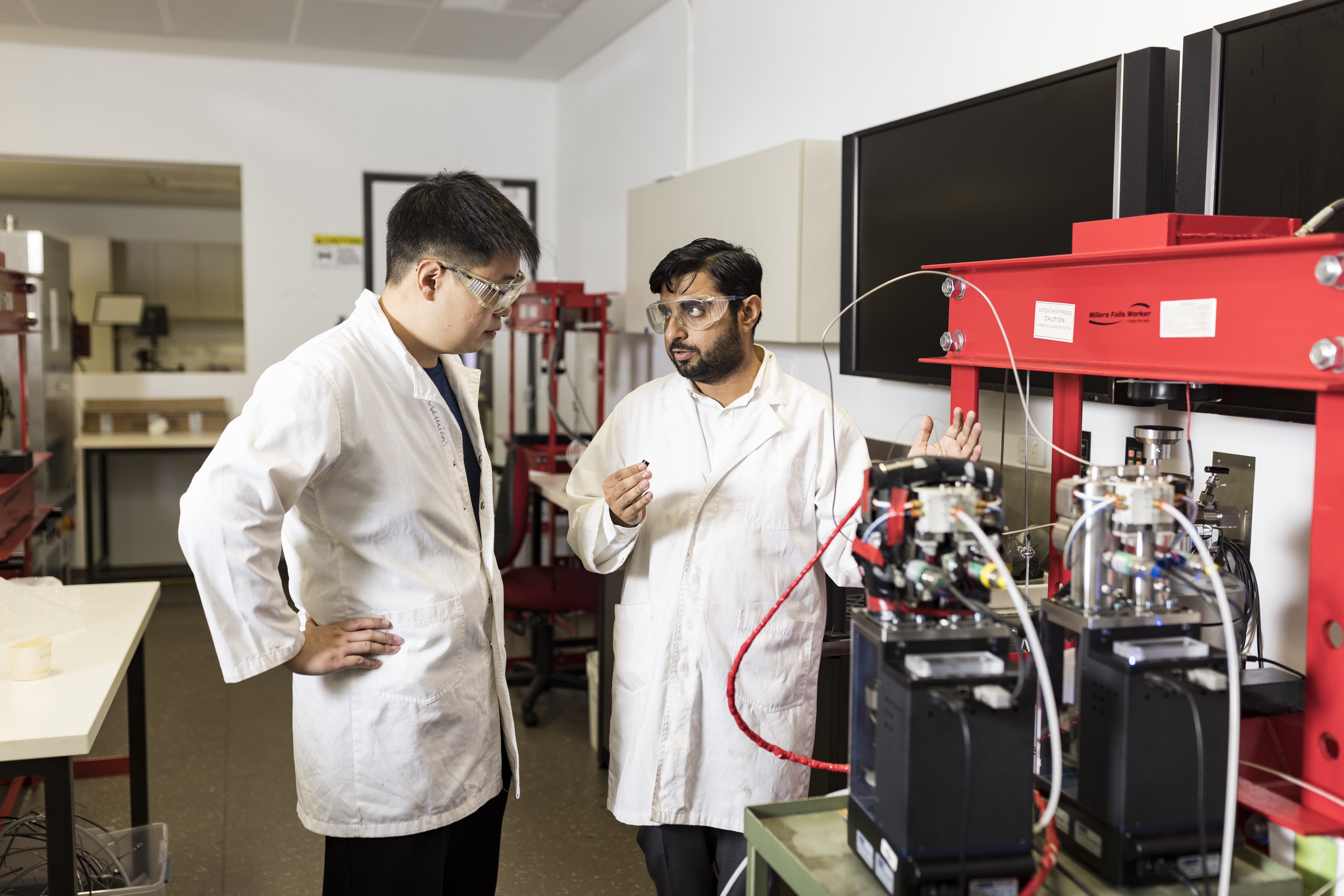
Multiphysics geomechanics sits in the centre of many challenges faced by societies today such as sustainable water and energy resources extraction, safe disposal of energy waste, subsurface gas storage, and natural hazards (earthquake, etc). This is because geomaterials deformation and its associated damage/failure is caused by several processes occurring in subsurface formations such as fluid pressure, chemical reaction, temperature variation, and mechanical loading.
Multiphysics geomechanics research seeks to understand and analyse the processes affecting rock deformation such as mechanical, thermal, hydraulic, and chemical loading and characterise such deformations using techniques such as optical, thermal, and acoustic tracking. This provides a unique opportunity to address industry challenges using their already collected data such as downhole geophysical logs.
-
- Sample preparation equipment
- Triaxial system with temperature and pore pressure controlled and ultrasonic enabled capabilities
- Ultrasonic and flow enabled, temperature-controlled X-ray transparent triaxial system
- X-ray transparent direct shear system
- High resolution surface profile scanner
- High pressure and high temperature variable frequency ultrasonic system
- Optical and infrared tracking system for damage analysis
- Ultrasonic tomography system
- Nano scale resolution interferometer-optical system coupled with high pressure and high temperature micro-shear cell
- Controlled temperature-humidity oven
- 100 T servo-controlling loading frames
- 50 T creep test frames
- Vacuum ovens
- 3D printers

Location
Room LG28
Tyree Energy Technologies Building (TETB) (H6)
The University of New South Wales (UNSW)
UNSW Sydney, NSW 2052, Australia
